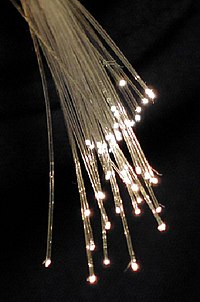
Photo from wikipedia
ABSTRACT Optical polishing and nanofinishing of glass substrates has gained impetus owing to the continuously increasing applications of precise optical components, but still, the process is elusive and skill dependent… Click to show full abstract
ABSTRACT Optical polishing and nanofinishing of glass substrates has gained impetus owing to the continuously increasing applications of precise optical components, but still, the process is elusive and skill dependent as several unaccounted parameters induce uncertainties. This study is an effort toward deterministic surface quality of glass substrates in polishing, based upon analysis and optimization of some pronounced parameters. In the experiments, BK7 glass samples (100 mm dia.) were polished for 3 hours using Ceria slurry on a conventional eccentric one arm spindle polisher employing a polyurethane pad. The experiment was designed as per Taguchi’s L9 orthogonal array for a comprehensive analysis. Three control parameters – relative velocity, normal force (pressure), and abrasive size – were varied and the resultant average roughness value (Ra), measured by a surface profilometer (Talysurf PGI-120), constituted the response. Kinematic analysis, using existing literature, yielded velocity and MALVERN ZETASIZER measured average abrasive size using dynamic light scattering principle. Relative velocity was observed to be the most significant parameter and normal force the least significant. Optimum combination was identified by deriving a deterministic relation for the best surface finish in the given time. Ra values as low as 6.8 nm in the experiment runs and 4.4 nm in the validation experiment were obtained.
Journal Title: Materials and Manufacturing Processes
Year Published: 2017
Link to full text (if available)
Share on Social Media: Sign Up to like & get
recommendations!